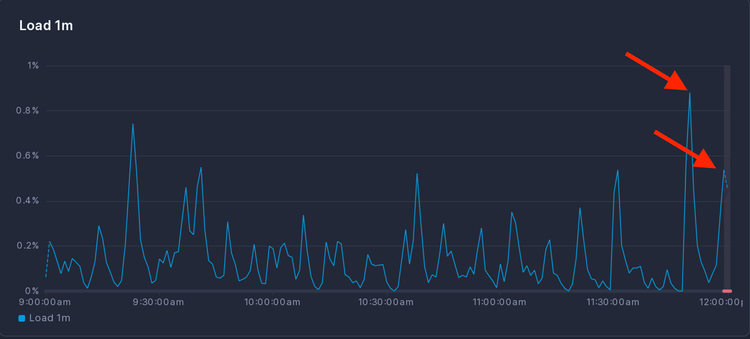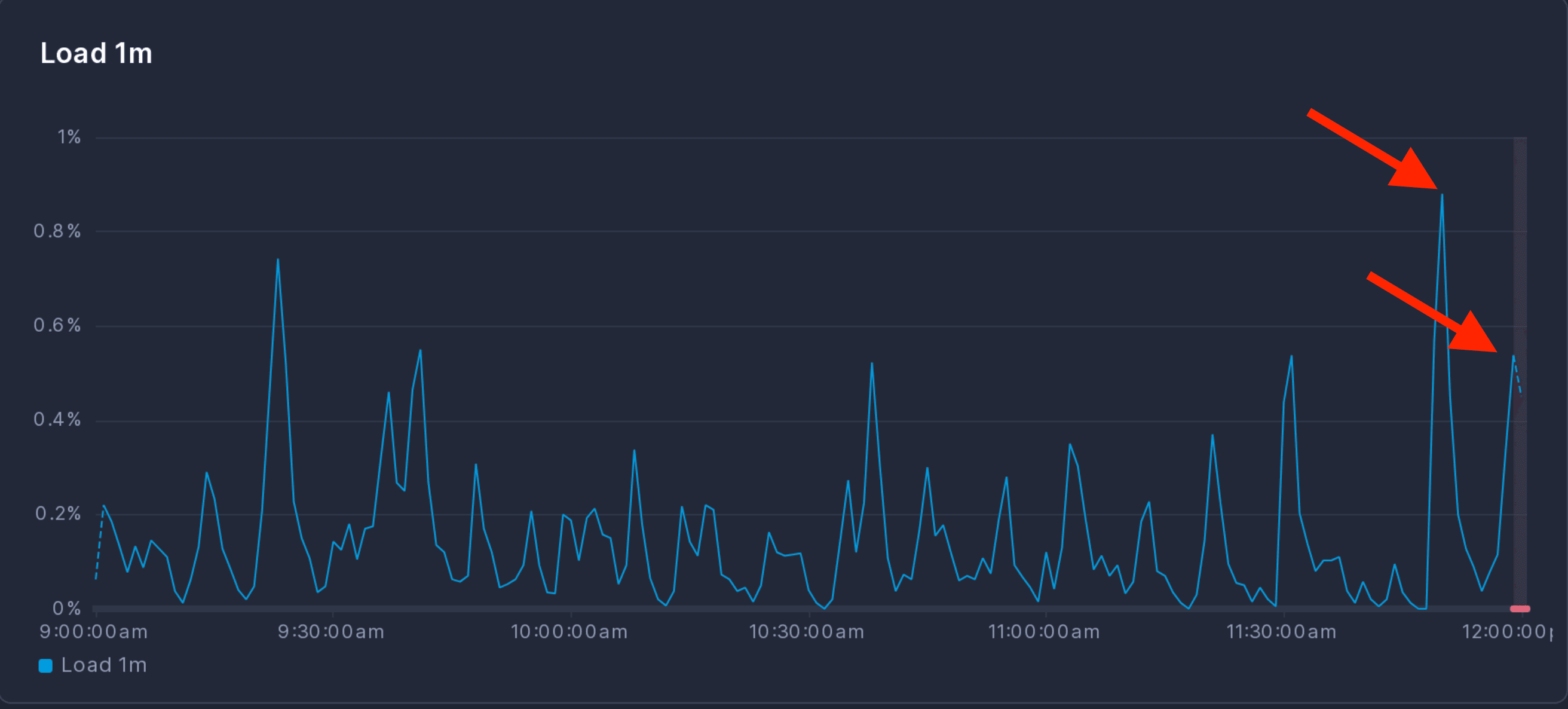Current State of AI-Powered Monitoring

1. Introduction
The rapid evolution of technology has led to increasingly complex IT infrastructures. Traditional monitoring tools, while effective in simpler environments, often struggle to keep pace with the growing complexity and scale of modern systems.
AI-powered monitoring has emerged as a powerful solution to address these challenges, offering proactive insights for uptime monitoring, intelligent alerts, and automated response mechanisms.
This article explores the current state of AI monitoring, its key features, benefits, and the role it plays in ensuring optimal system performance and reliability.
2. The Shift from Traditional Monitoring
Traditional monitoring tools, such as Nagios, Zabbix, and Prometheus, often operate reactively, responding to issues only after they have occurred. Those tools have the following limitations:
- Reactive Approach: Traditional tools are often reactive, responding to issues only after they have been detected, leading to potential downtime and service disruptions.
- Alert Fatigue: These tools often generate a high volume of alerts, many of which are false positives, overwhelming IT teams and hindering effective incident response.
- Limited Scalability: As IT infrastructures grow in complexity, traditional tools may struggle to keep up, leading to decreased visibility and control.
In contrast, AI-powered monitoring offers a more proactive and intelligent approach. By leveraging advanced machine learning algorithms, these tools can analyze vast amounts of data, identify patterns, and predict potential issues before they occur.
3. Key Features of AI Monitoring Tools
AI-powered monitoring tools address the limitations of traditional monitoring by leveraging advanced machine learning techniques to deliver the following key features:
- Proactive Monitoring - Early detection of potential issues. By analyzing historical data and real-time metrics, these tools can identify emerging trends and anomalies, take preventive measures, to support for a comprehensive server uptime monitoring.
- Intelligent Alerting - Prioritized alerts to reduce noise. By using machine learning algorithms to analyze alerts, these tools can identify patterns and automatically suppress or escalate alerts as needed.
- Scalability and Adaptability - Scalable solutions for evolving IT environments. By leveraging advanced machine learning algorithms, these tools can automatically adapt to changes in system behavior and workload.
Also, with the power of AI, the monitoring tools can provide:
- Anomaly Detection: Identify unusual patterns and behaviors. By using machine learning algorithms to analyze large volumes of data, these tools can quickly detect anomalies and alert IT teams to potential issues.
- Root Cause Analysis: Automate the process of identifying the root cause of incidents. By analyzing logs, metrics, and other relevant data sources, these tools can quickly pinpoint the underlying cause of a problem and provide recommendations for remediation.

The spikes in the graph highlight how AI can help identify and resolve issues in real-time.
4. Market Adoption and Trends
The adoption of AI monitoring has been steadily increasing across various industries. As organizations recognize the benefits of proactive monitoring and intelligent alerting, the demand for AI monitoring tools is expected to continue to grow. Key trends in the market include:
- Integration with Existing Tools: AI monitoring tools are increasingly being integrated with existing monitoring and IT operations tools to provide a comprehensive view of system health.
- Cloud-Based Solutions: Cloud-based AI monitoring platforms offer scalable and flexible solutions for organizations of all sizes.
- Focus on AIOps: AI for IT Operations (AIOps) combines AI and machine learning to automate IT operations tasks, including incident management, problem resolution, and capacity planning.
5. How the Real World Applies AI-Powered Monitoring
Financial Services:
- Fraud Detection and Security Monitoring: Financial institutions like JPMorgan Chase have implemented AI-powered monitoring to detect anomalies in transaction patterns, such as unusual withdrawal amounts or atypical transaction locations. This proactive approach helps prevent fraud and enhance security.
Telecommunications:
- Network Optimization: Telecom companies such as Verizon use AI-powered monitoring to analyze network traffic and optimize bandwidth allocation during peak periods. For instance, predictive algorithms can dynamically adjust network configurations to prevent service degradation during major events, such as live sports broadcasts or elections
- Predictive Maintenance: By analyzing historical performance data, telecom providers can predict hardware failures before they occur. For example, AT&T has reduced downtime by scheduling maintenance for equipment likely to fail based on AI-driven insights, ensuring uninterrupted services.
Cloud Services
- Dynamic Resource Allocation: Cloud providers such as AWS rely on AI-powered monitoring to manage resource allocation dynamically. AI tools predict workload spikes and adjust resources in real time to maintain optimal performance. For example, during product launches or unexpected traffic surges, AI-powered systems ensure uninterrupted service
- Multi-Region Failover Support: AI monitoring tools like those used by Google Cloud automatically detect regional outages and redirect traffic to backup regions, ensuring high availability for users. This approach reduces downtime and enhances reliability for global customers.
By leveraging AI-powered monitoring, these industries can address the limitations of traditional monitoring tools, improve operational efficiency, and enhance customer satisfaction.
6. Challenges and Considerations
While AI monitoring offers significant advantages, it also presents certain challenges:
- Data Quality and Quantity: The effectiveness of AI-powered monitoring depends on the quality and quantity of data available.
- Model Complexity and Interpretability: Complex AI models can be difficult to interpret and explain, making it challenging to understand the rationale behind certain decisions.
- Integration with Existing Tools and Teams: Integrating AI-powered monitoring tools with existing IT infrastructure and workflows can be complex.
7. Future Trends and Predictions
AI-powered monitoring is rapidly evolving, with several promising trends on the horizon:
- Autonomous Monitoring: AI-powered systems will autonomously detect, diagnose, and resolve issues, reducing human intervention and improving response times.
- AI-Augmented Observability: AI will enhance traditional observability tools, providing deeper insights into system behavior through advanced analytics and automated root cause analysis.
- Real-Time Insights and Predictive Analytics: AI-powered monitoring will enable real-time analysis of data and predictive insights to prevent future problems and optimize performance.
Industry leaders like Datadog, New Relic, and Dynatrace are actively investing in these areas, shaping the future of AI-powered monitoring.
8. Why Bubobot Stands Out
Bubobot, a leading AI monitoring solution, offers a range of features to help organizations optimize their IT operations:
- Flexible Alert System: Bubobot's flexible alert system allows you to customize alerts based on your specific needs, ensuring effective uptime monitoring.
- 20-Second Monitoring Intervals: Bubobot's rapid monitoring intervals provide real-time insights into system health.
- Extensive Integration Support: Bubobot integrates seamlessly with a wide range of IT tools, providing a unified view of your entire infrastructure.
Coming Soon: Anomaly Detection
Bubobot is actively developing advanced anomaly detection capabilities to further enhance its AI-powered monitoring solution. This feature will utilize machine learning algorithms to identify unusual patterns and behaviors that may indicate underlying problems, enabling proactive issue resolution and minimizing downtime.
9. Conclusion
AI-powered monitoring has revolutionized the way organizations manage and maintain their IT systems. By leveraging advanced AI and machine learning techniques, AI monitoring tools can help organizations achieve greater efficiency, reliability, and security.
Bubobot's innovative approach to AI monitoring empowers businesses to stay ahead of the curve and ensure optimal system performance.